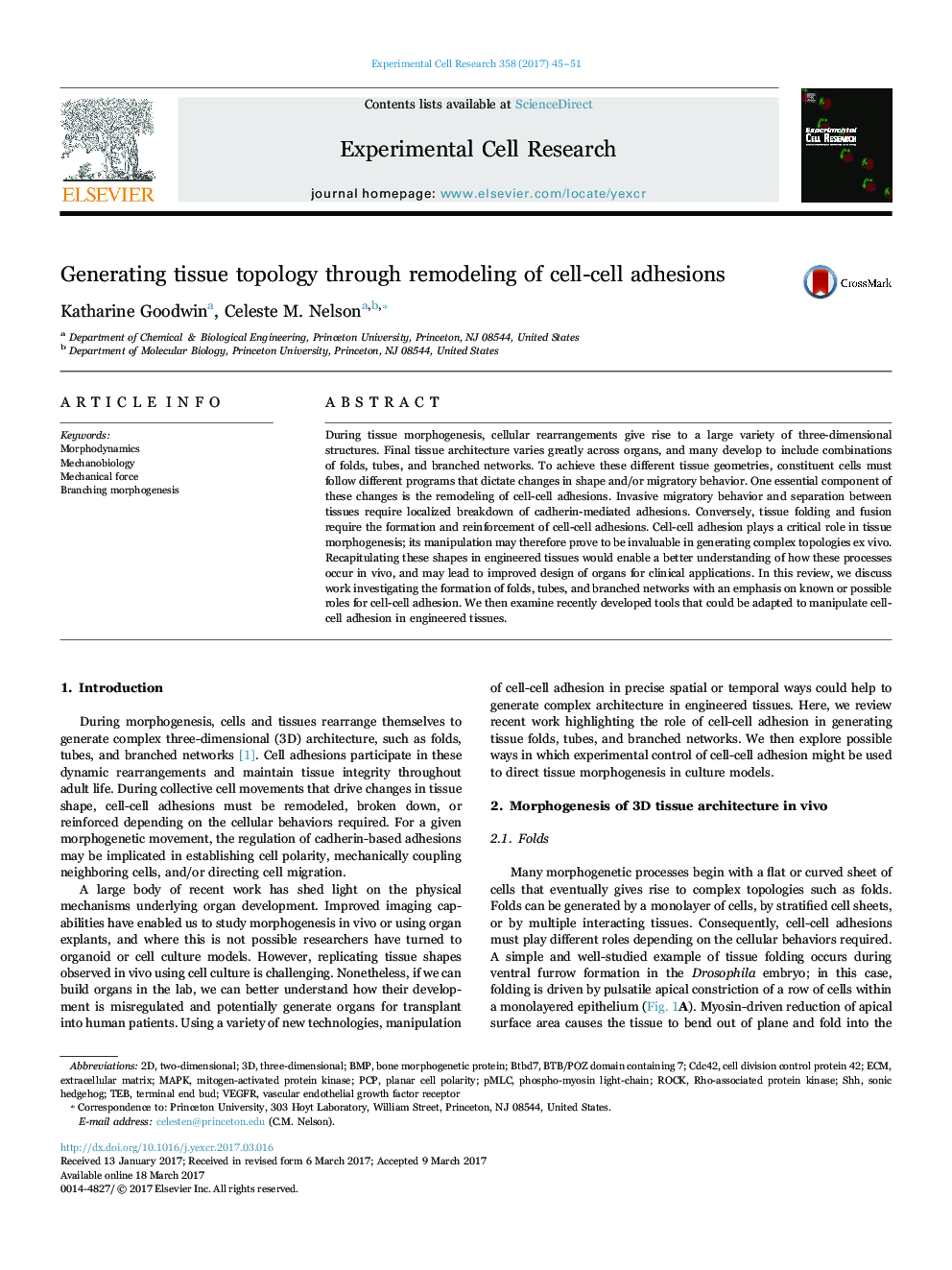| Article ID | Journal | Published Year | Pages | File Type |
|---|---|---|---|---|
| 5526868 | Experimental Cell Research | 2017 | 7 Pages |
â¢Cell shape changes and rearrangements give rise to highly varied tissue topology.â¢Generating 3D structures requires differential remodeling of cell-cell adhesions.â¢Cell-cell adhesion could be experimentally manipulated to engineer tissues.
During tissue morphogenesis, cellular rearrangements give rise to a large variety of three-dimensional structures. Final tissue architecture varies greatly across organs, and many develop to include combinations of folds, tubes, and branched networks. To achieve these different tissue geometries, constituent cells must follow different programs that dictate changes in shape and/or migratory behavior. One essential component of these changes is the remodeling of cell-cell adhesions. Invasive migratory behavior and separation between tissues require localized breakdown of cadherin-mediated adhesions. Conversely, tissue folding and fusion require the formation and reinforcement of cell-cell adhesions. Cell-cell adhesion plays a critical role in tissue morphogenesis; its manipulation may therefore prove to be invaluable in generating complex topologies ex vivo. Recapitulating these shapes in engineered tissues would enable a better understanding of how these processes occur in vivo, and may lead to improved design of organs for clinical applications. In this review, we discuss work investigating the formation of folds, tubes, and branched networks with an emphasis on known or possible roles for cell-cell adhesion. We then examine recently developed tools that could be adapted to manipulate cell-cell adhesion in engineered tissues.
